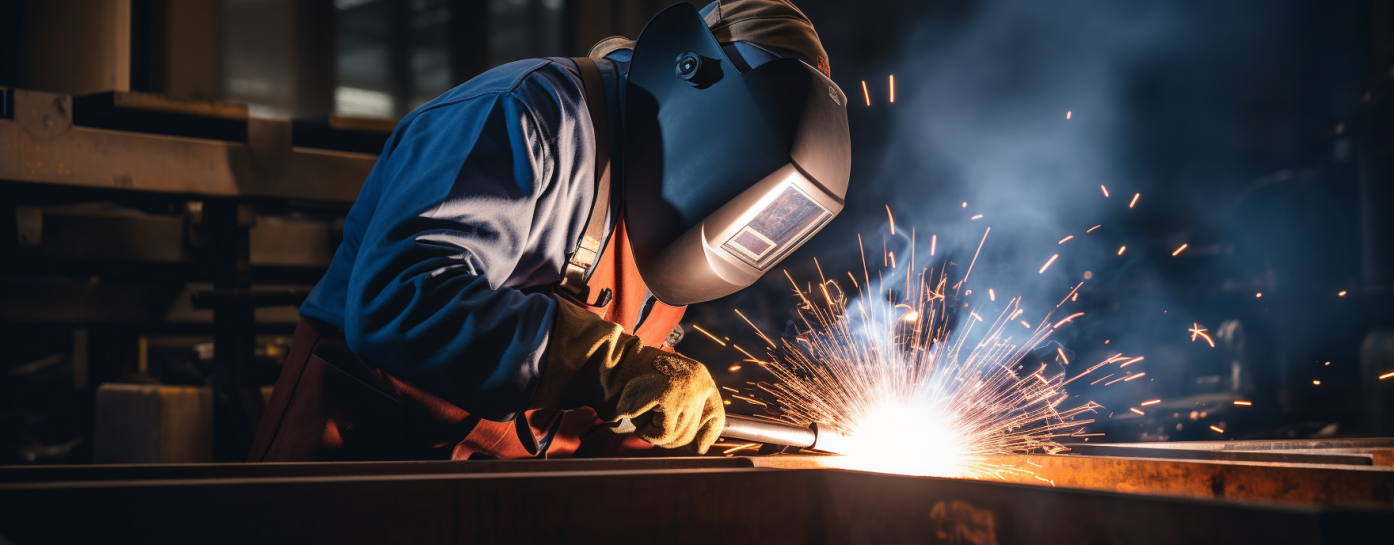Sheet metal welding stands as a cornerstone in the realm of manufacturing, playing a vital role in bringing together individual metal components to create structures that are durable, resilient, and capable of withstanding diverse operational demands. This process involves the fusion of metal through heat and pressure, creating robust joints that are essential in various industries.

Sheet metal welding is a process of joining two or more metal sheets by melting and fusing them at the point of contact. It requires the application of heat to the workpieces, typically achieved using an electric arc or laser beam. As the metal cools, a solid joint is formed, creating a connection that is often stronger than the base material.
MIG Welding (Metal Inert Gas):
MIG welding is a commonly used technique that involves feeding a wire electrode through a welding gun. The wire melts and fuses with the base metal, creating a strong joint.
This method is versatile and suitable for various metals, including steel, aluminum, and stainless steel.
TIG Welding (Tungsten Inert Gas):
TIG welding uses a tungsten electrode to create an arc, and a separate filler material may be added manually.
TIG welding offers precision and control, making it suitable for thin sheets and applications where aesthetic considerations are important.
Spot Welding:
Spot welding involves applying localized heat and pressure to create welds at specific points. It is often used for joining thin sheets of metal.
This method is widely employed in automotive manufacturing for creating strong and quick welds on sheet metal panels.
Strength and Durability:
Welded joints are known for their strength and durability, providing a reliable connection that can withstand various mechanical stresses.
This makes sheet metal welding essential in industries such as aerospace, automotive, and construction.
Versatility:
Sheet metal welding is versatile, allowing for the joining of different types of metals and thicknesses.
This versatility makes it suitable for a wide range of applications, from structural components to intricate assemblies.
Precision and Control:
Welding processes like TIG welding offer precise control over the heat input, minimizing distortion and ensuring the integrity of the welded joint.
Precision is crucial in applications where dimensional accuracy is paramount.
Efficiency in Mass Production:
Welding is an efficient method for mass production, enabling the creation of large quantities of welded components with consistent quality.
Its efficiency contributes to cost-effectiveness in high-volume manufacturing.
Sheet metal welding is integral to the production of various components and structures:
Automotive: Joining body panels, frames, and exhaust systems.
Aerospace: Fabricating structural components for aircraft and spacecraft.
Construction: Welding structural elements and framework.
Electronics: Creating enclosures and assemblies for electronic devices.
Despite its advantages, sheet metal welding poses certain challenges:
Distortion and Warping: The application of heat can lead to distortion and warping of thin metal sheets, requiring careful planning and technique.
Material Compatibility: Different metals have varying welding characteristics, necessitating proper selection of welding processes and techniques.
As technology continues to advance, the future of sheet metal welding lies in enhanced automation, robotics, and innovative welding techniques. Integration with artificial intelligence and machine learning may optimize welding parameters, ensuring higher precision and efficiency. The ongoing pursuit of more sustainable and eco-friendly welding technologies is also a focus for the future of this critical fabrication process.